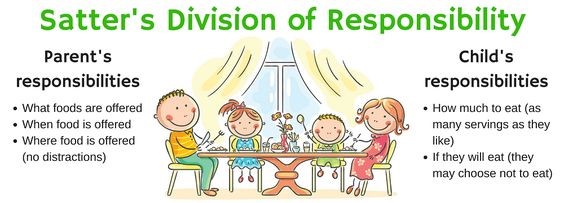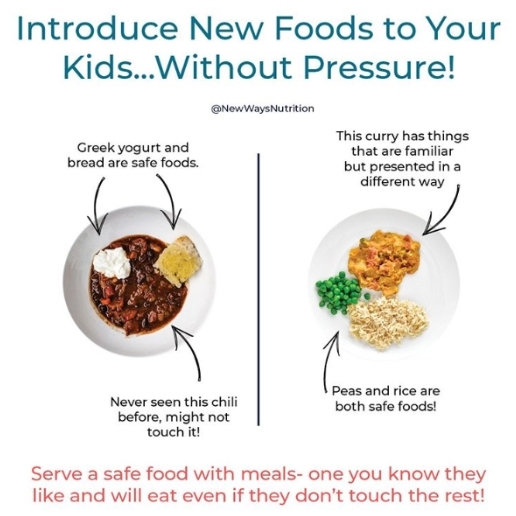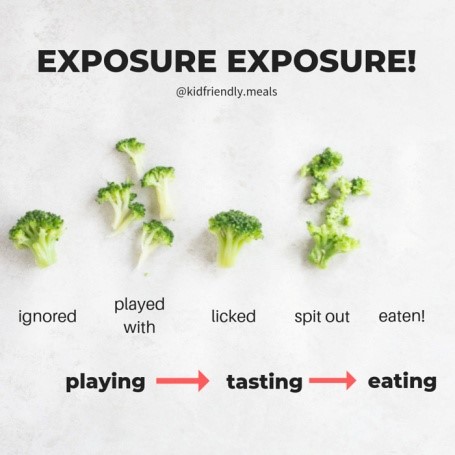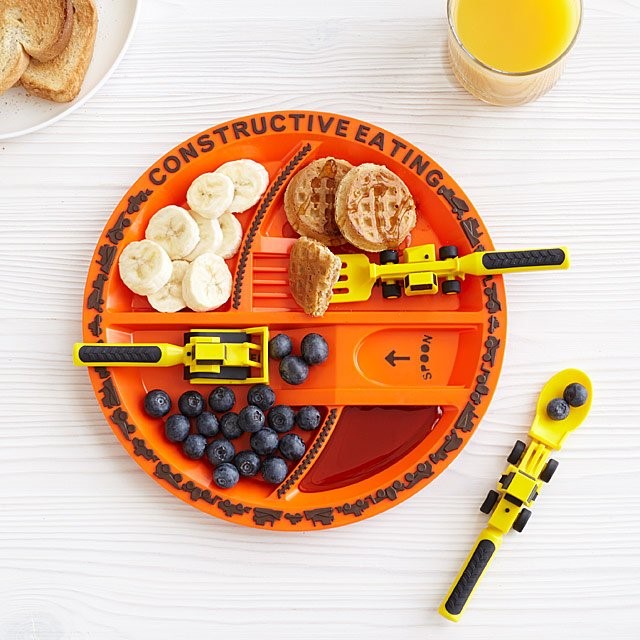- “You provide, they decide”
Ellyn Satter’s Division of Responsibility explains that a parent’s role is to provide food at a predictable schedule and set up a conducive environment for feeding. Resist the battle to bargain, bribe or force your child to eat. If your child says, “I don’t like that”, you can respond, “You don’t have to eat it”. By adjusting our mindsets, we remove the pressure and stress at mealtimes, and create a positive environment for children to explore and enjoy food.

- Set a meal and snack schedule
Have a predictable schedule of when food is provided. This helps children develop reliable hunger and fullness cues to regulate their own eating (barring any serious medical issues). Once you have decided to serve a particular meal, do not make a special meal for them if they reject what is served. Give them the freedom to be hungry for the next meal or snack (at least 2 hours later).

- At least one “safe food” at every meal
Ensure there is one food every meal that your child will eat. This considers their current skill level and preferences, to ensure it is not too overwhelming while they are learning to accept and try new foods.

- Repeated exposures of new foods
Research shows that children may take up to 15 exposures before they are willing to eat a new food. So if your child rejects something, don’t give up! Keep serving it. It may take 100 exposures, but they can only learn about it and try it if it is there.

- Make feeding fun – NOVELTY IS POWERFUL


- Use interesting utensils or food tools (e.g. food cutters, food picks) to encourage interaction with food. They can poke, cut, scoop, pour, etc.
- Allow exploration and food play. Touching and interacting with the food (smashing, licking or tasting) will bring your child one step closer to actually eating it.
- Talk about the properties of food (“oh look this is yellow like the sun!” “this makes a squishy noise!”), use silly names, present foods in particular shapes or patterns to pique their interest, or introduce some competition (“let’s see who can make it taller!”)
- Family mealtimes
- Social modelling helps children learn about the expected behaviour at mealtimes. As much as possible, have at least 1 adult or family member eating together with them.
- Toys, phones, tablets should be kept away. We want children to be paying attention and enjoying their meals without relying on distractions to eat. Mealtimes are great opportunities to engage with your child and spend time as a family!

www.amazingspeechtherapy.sg [email protected] +6581216691

